01
Mining impact calculator
Gold extraction has expanded rapidly along the Amazon River in recent years. These activities cause erosion, deforestation, water contamination, loss of biodiversity, and serious health issues among Indigenous populations due to the use of mercury. Studies indicate that most miners operate illegally, and some countries—such as Ecuador—are heavily dependent on gold mining.
The Mining Impact Calculator is an economic valuation tool developed by the Conservation Strategy Fund (CSF), funded by the World Bank (United Nations), in collaboration with the Brazilian Federal Public Prosecutor’s Office (MPF). It was created to estimate the financial value of the socio-environmental impacts of illegal gold mining and to raise awareness of the true cost of the gold industry.
Originally developed to support an economic study by public prosecutors, the online calculator has since attracted attention from various countries and institutions. It is now used by a wide range of actors for different purposes: by public prosecutors’ offices to calculate fines for illegal mining, by NGOs to expose such activities, and by national parks to initiate inspection processes, among others.
As a UX consultant, I was responsible for gathering user feedback on the first version of the calculator, analysing website usability, and facilitating co-design sessions with key stakeholders (including users). Online interviews were conducted with stakeholders who had diverse interests in the tool—such as the Ministry of Energy and Mining, Ministry of the Environment, Public Prosecutor’s Office, research centres, universities, and NGOs. These interviews revealed different perspectives on gold extraction, oversight of mining activities, methods for impact estimation, and the various potential uses of the calculator.
Although opinions about mining activities diverge, experts agree on the importance of regulation and the need to develop affordable technologies to mitigate the environmental and social impacts on the region.
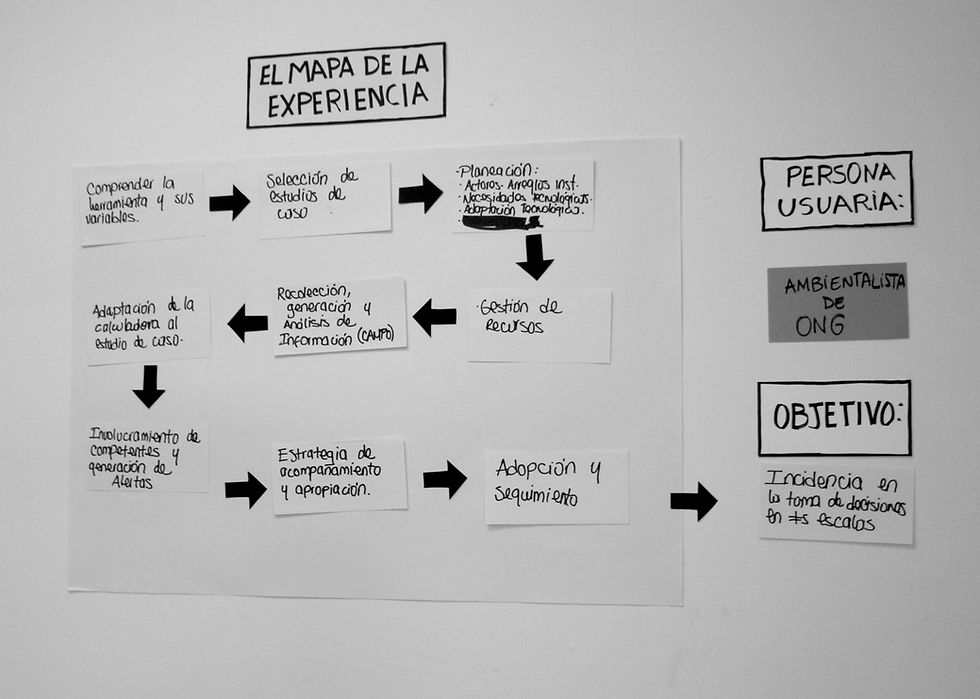
User Journey Map created during a co-design sesion for CSF in Colombia.
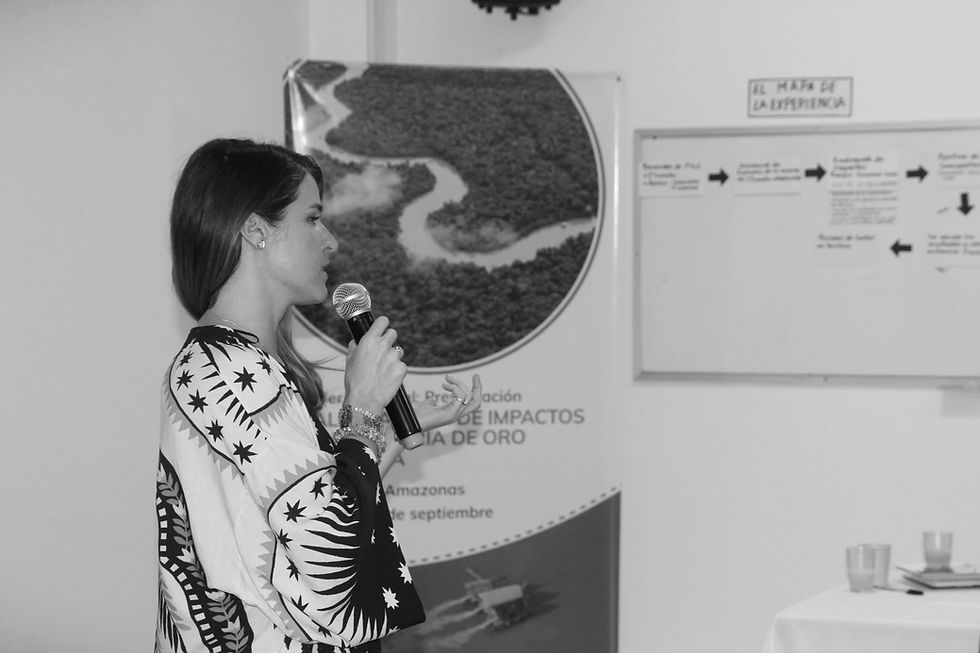
Milena Lopes explains the co-design session goals and procedures to participants
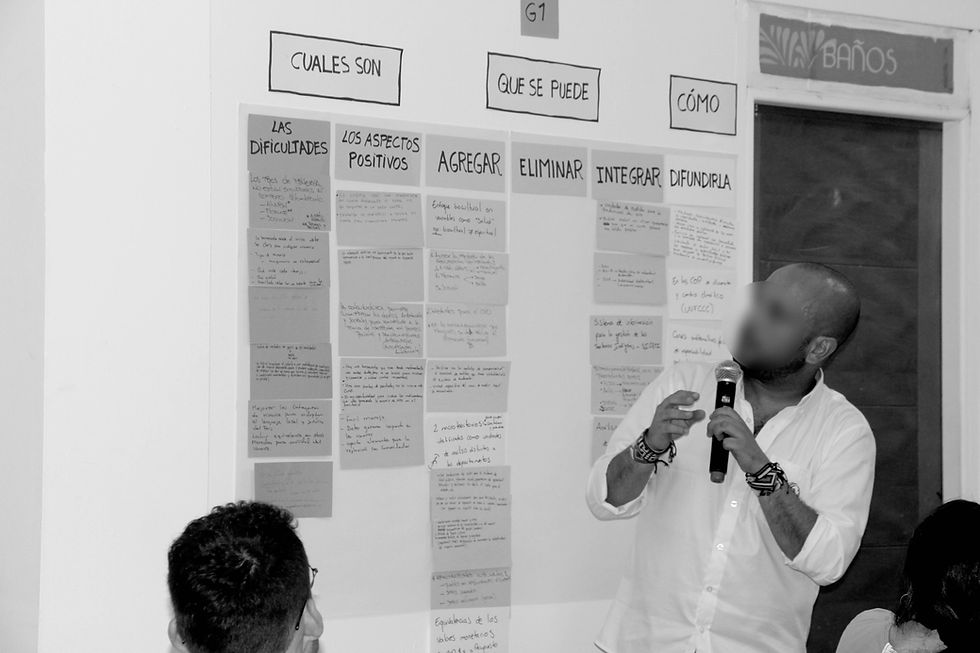
Participant summarise the group discussion and results in Colombia

User Journey Map created during a co-design sesion for CSF in Colombia.
The co-design sessions were conducted in person in Colombia and Peru, and virtually in Ecuador. The in-person sessions took place during two-day immersive workshops with stakeholders, held in Spanish, each bringing together around 40 participants. I was invited to organise a co-design session within the workshops to take advantage of having key stakeholders and primary users gathered in one place.
To ensure the sessions were both enjoyable and productive, I divided participants into three simultaneous groups and adapted UX methods to suit the context. As a result, I collected first impressions of the tool and mapped the user journeys of three different key user profiles.
During the workshop in Peru, I used the structure of the Lightning Decision Jam (LDJ), which works well regardless of group size. The virtual sessions in Ecuador involved approximately 15 participants, who also took part in an LDJ session using a visual collaboration platform alongside a video conferencing tool.


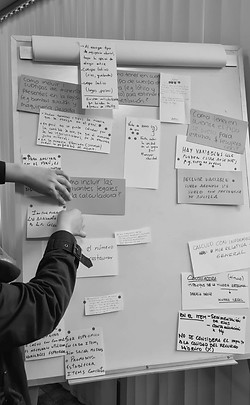
The insights gathered were translated into design ideas that guided the creation of a new concept for the calculator, which was then validated with users. During concept testing, users suggested a few small additions, which were incorporated into the development process.
In addition to the user research, I conducted a heuristic evaluation of the first version of the online calculator and identified 32 usability issues. Initially, CSF intended to simply adjust the original version, but based on my recommendations, they decided to develop an entirely new website — see wireframes below.
The first version offered two navigation options: a short path for experienced users and a guided walkthrough. However, the walkthrough was overly long and required users to navigate through multiple pages before reaching the calculator and viewing results. A UI designer created the new interface based on my wireframes — see "UI before and UI after" below.
User journey (1/3):
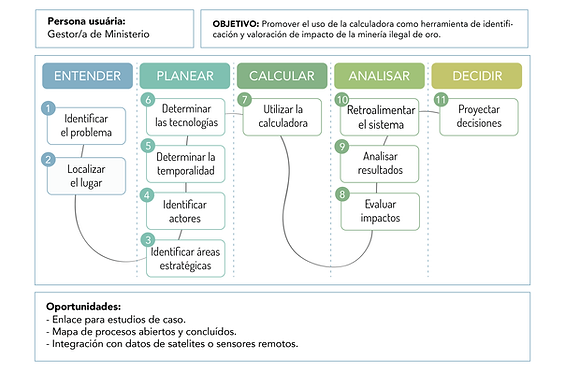
Website page 1: home
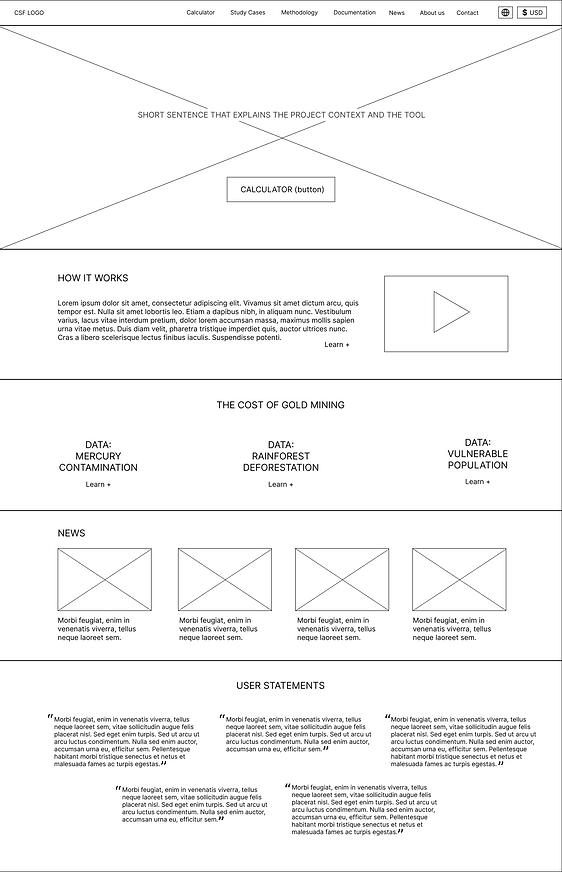
Website page 2: calculator

Website UI BEFORE:
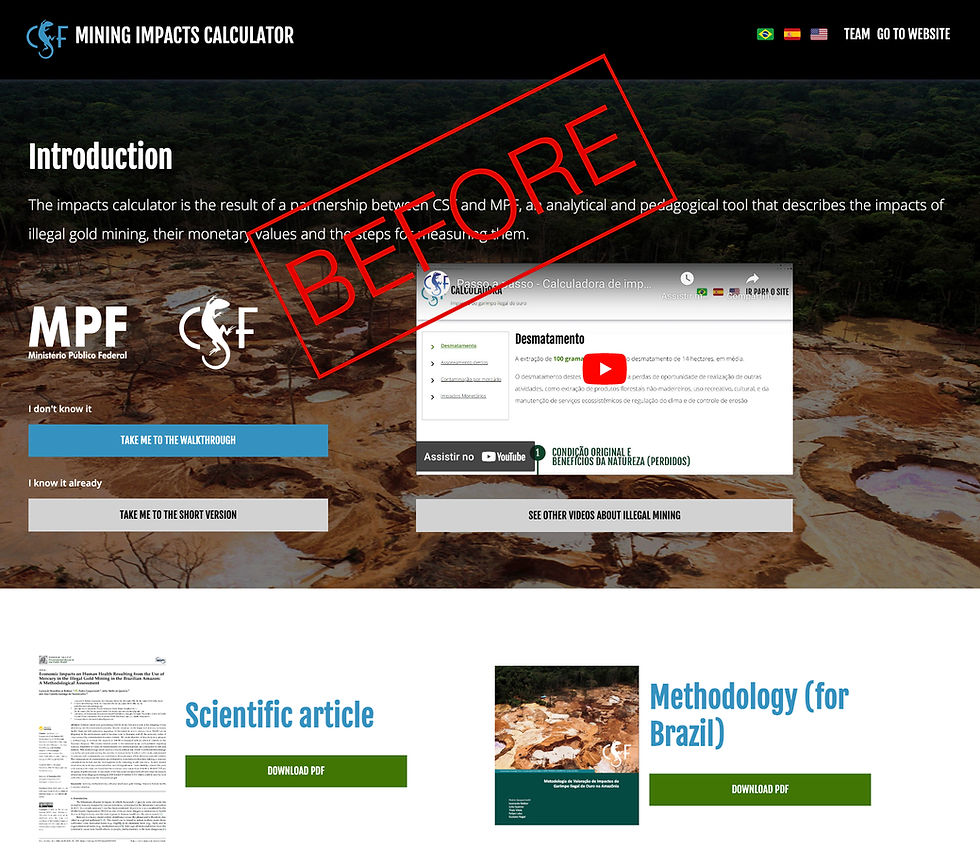
CSF first version of the calculator's homepage
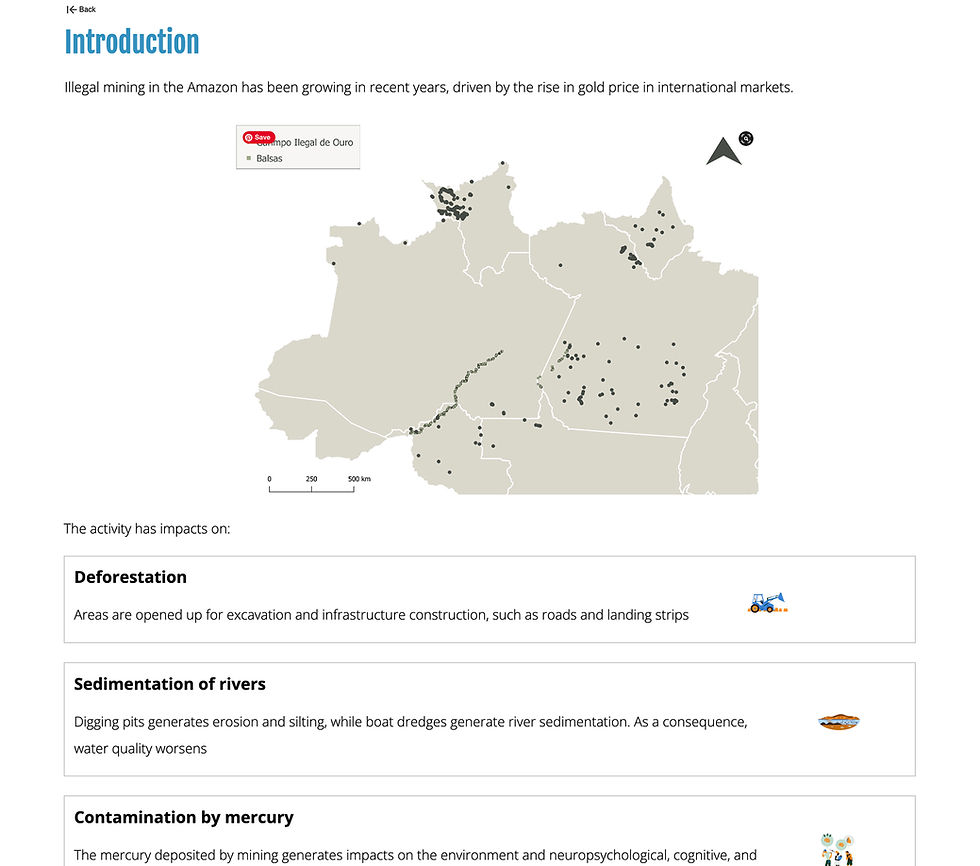
Page describing the different types of mining impact
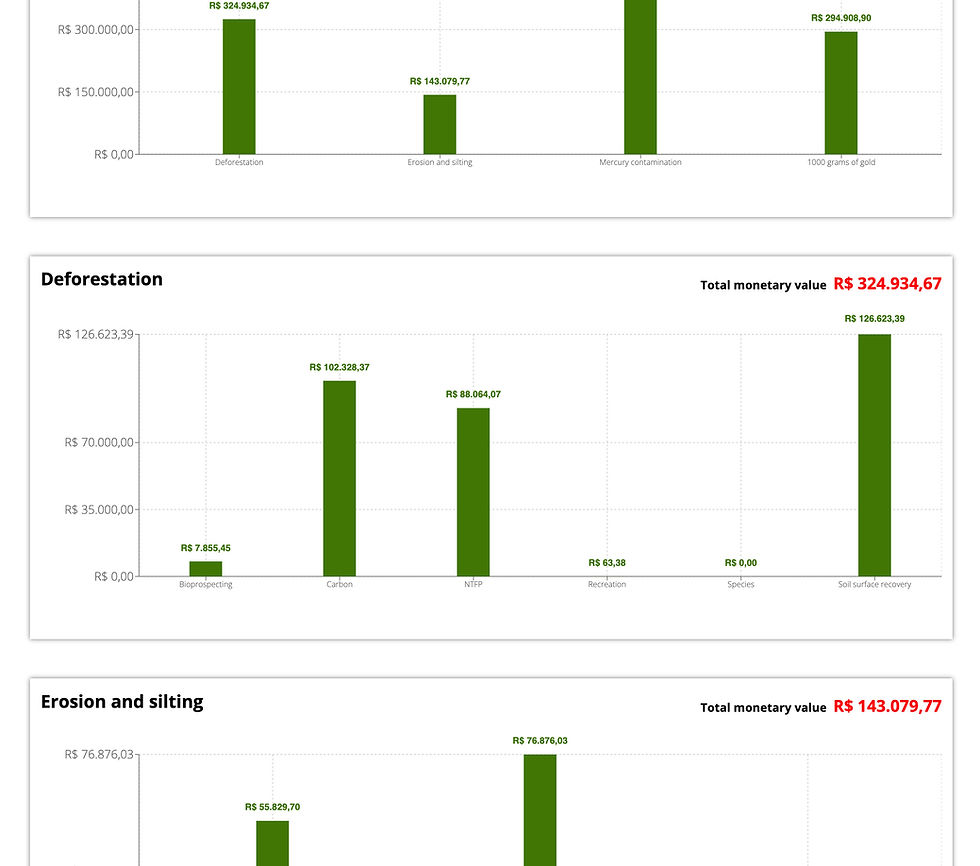

CSF first version of the calculator's homepage
Calculator page UI AFTER:
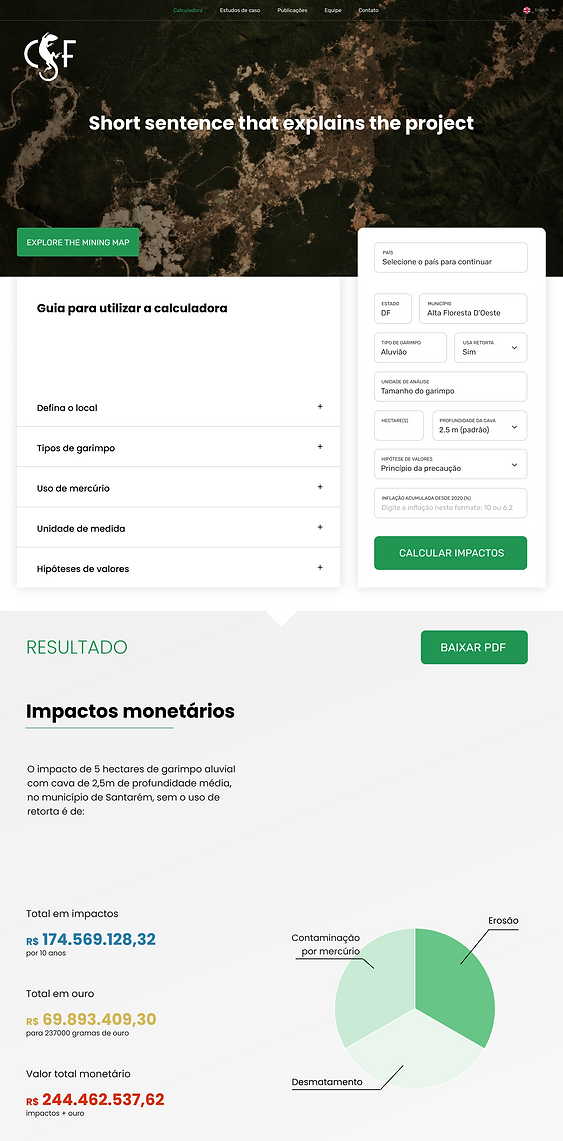
Homepage UI AFTER:
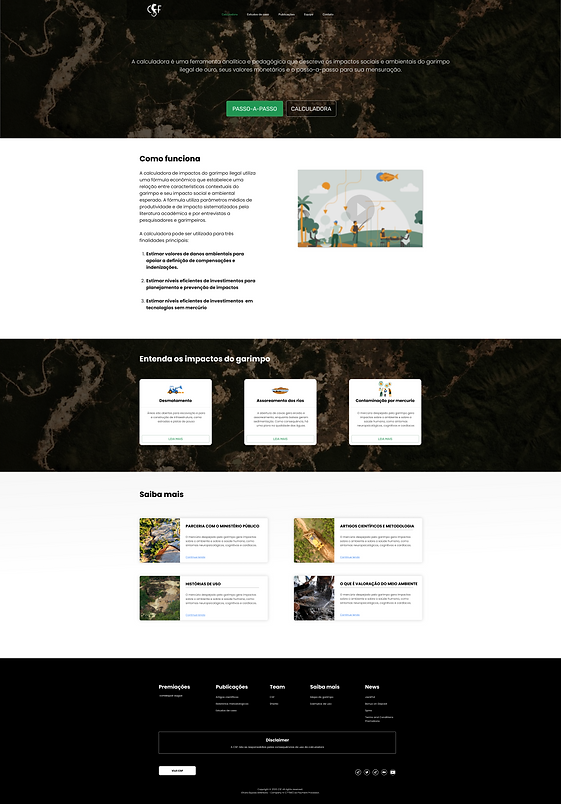
ROLE
UX researcher & designer
LOCATION
Colombia, Peru & Ecuador
PARTICIPANTS
100+ stakeholders
▪︎ Federal prosecutors
▪︎ Federal police officers
▪︎ Environmentalists
▪︎ National Park rangers
▪︎ Indigenous people
▪︎ Indigenous representatives
▪︎ Researchers
UX TOOLS
▪︎ Co-design workshop
▪︎ Concept Testing
▪︎ Focus group
▪︎ Heuristic evaluation
▪︎ Interview
▪︎ User journey
PAIN POINTS
▪︎ There is no mining standards in the Amazon;
▪︎ The "human" aspect is missing;
▪︎ Variables are insuficient;
▪︎ Confusing units;
▪︎ Values about "people" impacted are subjective;
▪︎ Formula is not clear;
▪︎ Generalised data.
▪︎ The visualisation of results is not good.
INSIGHTS
▪︎ The Amazon region emcopasses different cultures, languages, mining processes and terms;
▪︎ The community is divided between the anti-mining and pro-mining ones;
▪︎ It is important remind that the most important actor in the Amazon is the local indigenous community;
▪︎ Regulatory and follow-up processes are long and laborious, which discourages miners from complying with the law;
▪︎ Experts are eager to use the calculator but they need to understand it better and be sure it is reliable.